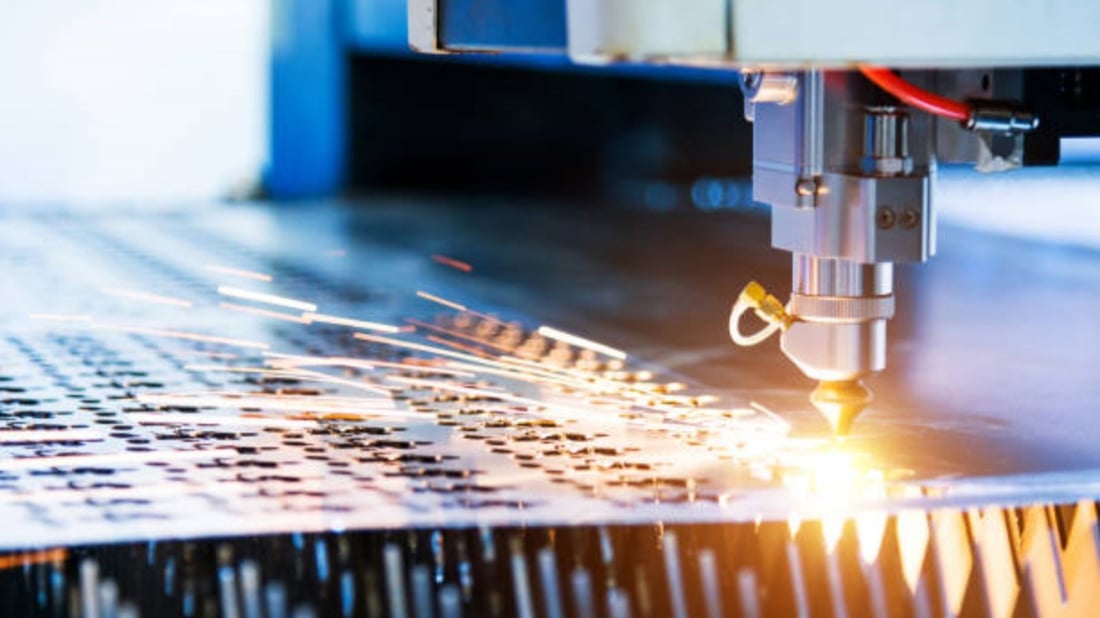What materials can a fiber laser cut? A Comprehensive Guide
When it comes to laser cutting, fiber lasers have gained significant popularity due to their high precision and efficiency. They are widely used in various industries, including manufacturing, automotive, aerospace, and more. But what materials can a fiber laser cut? In this comprehensive guide, we will explore the capabilities of fiber lasers and the range of materials they can effectively cut.
Metallic Materials
Fiber lasers are particularly adept at cutting metallic materials. They can effortlessly cut through a wide range of metals, including stainless steel, carbon steel, aluminum, copper, brass, titanium, and many others. The high power density of fiber lasers allows for precise and clean cuts, making them ideal for intricate designs and fine details. Whether it's thin sheets or thick plates, fiber lasers can handle various thicknesses with ease.
Non-Metallic Materials
While fiber lasers excel in cutting metallic materials, they are also capable of cutting certain non-metallic materials. These include plastics, acrylics, polymers, composites, and even some natural materials like wood and leather. However, it's important to note that the ability to cut non-metallic materials may vary depending on their composition and thickness. For instance, fiber lasers can easily cut thin acrylic sheets but may struggle with thicker blocks of wood.
Precise Cutting of Thin Materials
Fiber lasers are particularly well-suited for cutting thin materials with extreme precision. They can create intricate shapes and designs on thin sheets without causing any distortion or warping. This makes fiber lasers highly desirable in industries that require delicate and precise cutting, such as electronics, medical devices, and jewelry making.
Speed and Efficiency of a fiber laser cut
One of the key advantages of fiber lasers is their speed and efficiency. They can cut through materials at a much faster rate compared to traditional cutting methods. The high power density and concentrated laser beam allow fiber lasers to quickly and accurately cut through even the toughest metals. This increased efficiency translates to higher productivity and reduced production time.
Minimal Heat Affected Zone (HAZ)
When cutting materials using traditional methods, the heat generated during the process can often lead to a significant heat-affected zone (HAZ) around the cut. This can result in material distortion, warping, and other undesirable effects. However, fiber lasers produce a much smaller HAZ, thanks to their concentrated beam and precise cutting capabilities. This means minimal distortion and a higher quality cut.
Low Operating Costs of a fiber laser cut
Fiber lasers are not only efficient in terms of cutting speed but also in terms of operating costs. They consume less energy compared to other types of lasers, making them more cost-effective in the long run. Additionally, fiber lasers have a longer lifespan, require minimal maintenance, and have lower operating costs, making them an attractive choice for businesses looking to optimize their production processes.
Flexibility and Versatility of a fiber laser cut
Fiber lasers offer a high degree of flexibility and versatility when it comes to cutting different materials. With the right settings and adjustments, they can switch seamlessly from cutting thin sheets of aluminum to thicker stainless steel plates. This adaptability makes fiber lasers suitable for a wide range of applications, from small-scale projects to large industrial operations.
Environmentally Friendly
As the world becomes increasingly conscious of environmental impact, fiber lasers offer a greener alternative compared to traditional cutting methods. They produce minimal waste and do not require the use of harmful chemicals or solvents. Fiber lasers are also more energy-efficient, contributing to reduced carbon emissions and a smaller ecological footprint.
Integration with Automation of a fiber laser cut
Fiber lasers can be easily integrated into automated systems, allowing for seamless and efficient production processes. They can be programmed to cut complex patterns and shapes with minimal human intervention, maximizing productivity and reducing the risk of errors. The compatibility of fiber lasers with automation systems makes them an invaluable tool in modern manufacturing and fabrication.
Limitations and Considerations
While fiber lasers offer numerous benefits, it's important to consider their limitations as well. Firstly, the thickness of the material that can be effectively cut may vary depending on the power and configuration of the fiber laser. Thicker materials may require higher power lasers or multiple passes to achieve the desired cut. Additionally, certain materials may emit fumes or hazardous gases when cut by a fiber laser, requiring appropriate safety measures to be in place.

